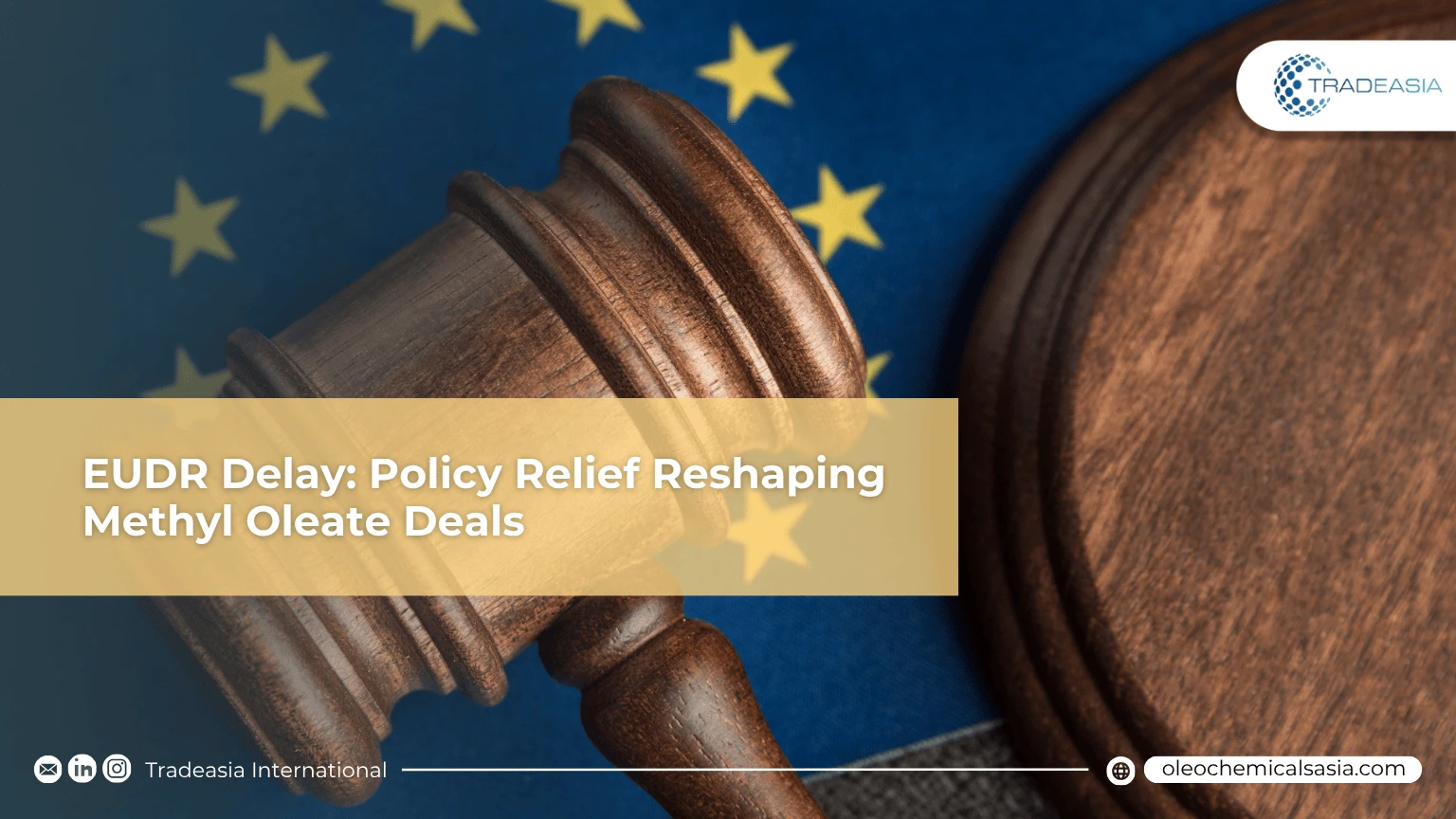Policy Relief: How the EUDR Delay is Altering Methyl Oleate Contract Negotiations

Table of Content
- The Retreat of the Sustainability Premium
- Asian Resilience and Structural Market Growth
The political landscape has delivered a significant, albeit temporary, change to the European oleochemical sector in October 2025. The proposed second postponement of the EU Deforestation Regulation (EUDR) implementation, pushing the deadline toward late 2026 or beyond, has profoundly altered the tenor of annual contract negotiations for palm-based derivatives like Methyl Oleate. This policy shift temporarily removes the immediate regulatory imperative that had been driving up the cost of certified raw materials.
In a market where trust is the ultimate currency, suppliers need to prove they are "connected directly to the heart of the world's most extensive palm supply network." Companies like Tradeasia International specialize in providing this direct, transparent connection, allowing buyers to navigate complex regulations and price swings with full confidence in their sourcing integrity for Methyl Oleate feedstock.
The Retreat of the Sustainability Premium
For months, European manufacturers who use Methyl Oleate in their products—ranging from biodegradable surfactants to high-performance industrial fluids—were bracing for the financial impact of EUDR compliance. Market analysts had forecasted that the required traceability for Oleic Acid (the Methyl Oleate precursor) would necessitate a 3-5% price premium on certified, segregated supplies. The new delay has immediately removed this looming cost. As annual 2026 tenders are being finalized this month, European buyers are quickly adapting their strategy. The focus has pivoted from securing high-cost certified volumes to aggressive negotiation on base price and volume, leveraging current market inventory data to seek cheaper Oleic Acid inputs for Methyl Oleate production. This is a critical pivot, alleviating capital expenditure pressures across the supply chain.
Asian Resilience and Structural Market Growth
While European buyers are adjusting to the regulatory reprieve, the global Methyl Oleate market’s stability is primarily anchored in Asian demand and supply. The Asia-Pacific oleochemicals market, which controls the raw material production, was valued at a robust US$ 18.51 billion in 2023. This region’s internal consumption and strong export profile to non-EU markets are largely unaffected by Brussels' policy timeline. The current CPO futures curve shows slight backwardation between October/November 2025 and early 2026 contracts, reflecting a trader consensus that while current physical supply is tight, regulatory risk is a secondary concern. Producers who had invested in sustainability infrastructure can now leverage that for efficiency, rather than pure compliance, thereby ensuring a smoother supply of Methyl Oleate to markets driven by intrinsic demand for its versatile properties.
Sources:
-
Fortune Business Insights - Oleochemicals Market Size, Share, Value | Outlook Report [2032]
-
CME Group - USD Malaysian Crude Palm Oil Calendar Futures Quotes
-
EUDR Delay and Its Immediate Impact on 2026 Oleochemical Tender Negotiations - OleochemicalsAsia.com

Leave a Comment